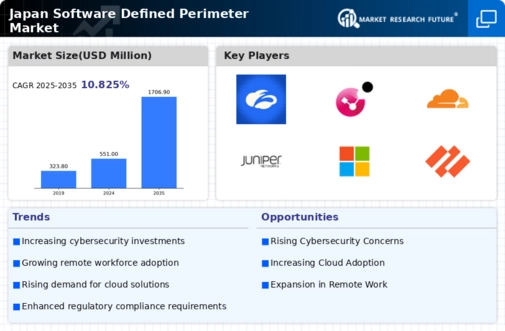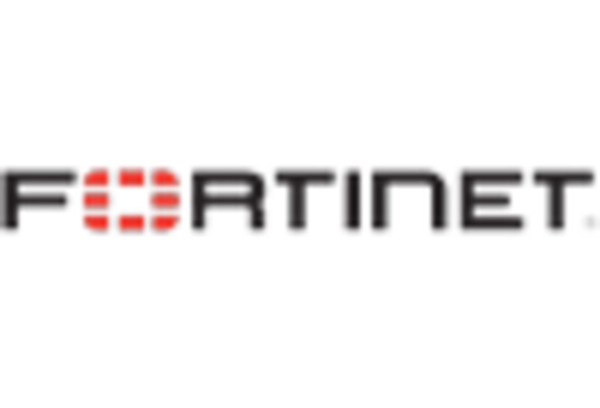Emergence of Advanced Threats
The software defined-perimeter market is significantly influenced by the emergence of advanced cyber threats. In Japan, organizations are increasingly facing sophisticated attacks that target vulnerabilities in traditional security frameworks. This has led to a heightened focus on adopting innovative security solutions that can effectively mitigate risks. The software defined-perimeter model offers a unique approach by creating a secure perimeter around users and devices, thereby reducing the attack surface. As cyber threats evolve, the market is expected to witness a surge in demand for adaptive security measures. This trend indicates a shift towards proactive security strategies, positioning the software defined-perimeter market as a vital component in the defense against emerging threats.
Rising Adoption of IoT Devices
The proliferation of Internet of Things (IoT) devices in Japan is significantly influencing the software defined-perimeter market. As more organizations integrate IoT technologies into their operations, the need for secure access and data protection becomes paramount. IoT devices often introduce vulnerabilities that can be exploited by cybercriminals, necessitating a robust security framework. The software defined-perimeter model provides a means to secure these devices by establishing a controlled access environment. With the IoT market in Japan projected to grow to $30 billion by 2025, the software defined-perimeter market is likely to experience increased demand as organizations seek to safeguard their IoT ecosystems. This trend underscores the importance of adopting comprehensive security solutions in the face of expanding IoT adoption.
Regulatory Pressures for Data Security
Regulatory pressures surrounding data security are becoming increasingly stringent in Japan, impacting the software defined-perimeter market. Organizations are required to comply with various regulations aimed at protecting sensitive information. This has led to a growing emphasis on implementing security measures that align with regulatory requirements. The software defined-perimeter model offers a framework that can help organizations meet compliance standards while ensuring data protection. As regulatory bodies continue to enforce stricter guidelines, the demand for software defined-perimeter solutions is expected to rise. This trend suggests that organizations will prioritize investments in security technologies that not only enhance protection but also facilitate compliance with evolving regulations.
Increased Demand for Remote Work Solutions
The shift towards remote work has catalyzed a notable transformation in the software defined-perimeter market. Organizations in Japan are increasingly adopting remote work solutions, which necessitate robust security measures. This trend is driven by the need to protect sensitive data accessed from various locations. As a result, the software defined-perimeter market is projected to grow at a CAGR of approximately 15% over the next five years. Companies are investing in technologies that ensure secure access to corporate resources, thereby enhancing their overall security posture. The demand for seamless connectivity and security in remote work environments is likely to propel the adoption of software defined-perimeter solutions, making it a critical driver in the industry.
Growing Investment in Digital Transformation
Digital transformation initiatives are reshaping the landscape of the software defined-perimeter market in Japan. Organizations are increasingly investing in digital technologies to enhance operational efficiency and customer engagement. This shift necessitates a reevaluation of security strategies, as traditional perimeter defenses may no longer suffice. The software defined-perimeter market is poised to benefit from this trend, as businesses seek solutions that align with their digital transformation goals. According to recent estimates, the digital transformation market in Japan is expected to reach $100 billion by 2025, driving the demand for integrated security solutions. This investment in digital infrastructure is likely to bolster the adoption of software defined-perimeter technologies, making it a key driver in the industry.

















Leave a Comment